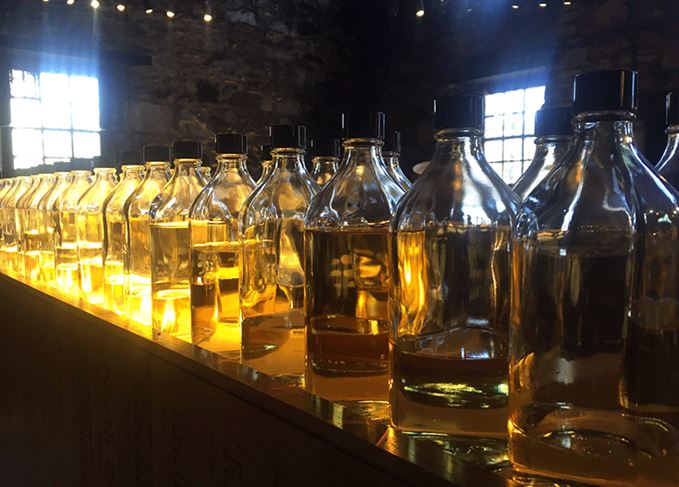Have you ever tried to create your own blended whisky? A series of classes allowed the Whisky Virgin to experience the work of a master blender – but it soon became clear that it’s anything but simple.

Easy everyone, feels like a while since we’ve had a little whisky chat, you know? So, let me catch you up on what I’ve been up to since my last post. You can bet I’ve been keeping up the tastings – you know me by now, I’m always trying to improve my palate – but what’s really caught my interest over the last month or two are blends.
It started with an invitation to a blending session with a pretty high-profile whisky brand, and then, before I knew it, two more had also landed in my inbox. Maybe it’s a new whisky event trend, who knows… But truth be told, I was a bit sceptical about how much I would really learn from the first session.
The cynic in me was all: ‘This is just a marketing ploy; what’s the point?’ But I'm happy to give everything a go once, and what do you know? I couldn’t have been more wrong. It was legit one of the most educational experiences of my whisky life so far. Don’t knock it ’til you’ve tried it, right?
So, the first class. It started with a formal tasting of the brand’s core range of blends, the usual discussions around flavours and aromas, and the all-important question: which one do you like? Then it was over to us to begin the hard work. And make no mistake, bruv – blending is hard.
With five samples, we were asked to create a blend that was as close to our favourite expression as possible. I’m a big fan of Bourbon barrel-aged whiskies, with vanilla, honey notes, so that was my aim. I was advised to start with a base of around 50% grain whisky and build from there – and mind the peat! (No kidding…)
With about five different samples to use, we had 30-45 minutes to perfect our blends. It was a lot of trial and error; of trying to create balance between the liquids and adding a little complexity. But a slight miscalculation could tip your blend completely off-centre – and, I’m afraid to say, that’s exactly what happened with blend number one. Way too spicy man, and no matter how I tried to tweak my recipe, I couldn’t pull it back. My blend was a goner. Perhaps I’ll give it to someone I don’t like very much…
The next couple of blending classes I went along to followed a similar style. Formal tasting of the whiskies and then a set time to create your own blend. It was like being back in the science lab at school; coats on, beakers, pipettes, funnels, all the equipment laid out before us – but way more fun than them chemistry lessons, for sure.
Did my blending get any better with the more classes I did? Slightly, perhaps. But you can see why it takes years, decades even, to become a master blender. Blenders will take weeks, maybe months, to perfect their whiskies, and will be blending a ton of different barrels and casks together to create an identical batch to the previous one. How do they do it? I’m in absolute awe after trying it out myself. There is some serious skill that goes into making a blend.
And it got me thinking about this conversation I keep hearing throughout the whisky industry of how single malts are superior to blends. It’s rubbish, I’m telling you. As I learned from the all-knowing, all-seeing Whisky Prof, single malts – unless they’re single casks – are blends themselves. And, as always, it comes down to personal preference.
Judge a whisky on the liquid in your glass, not by the title on the label. And whatever your preference, bow down to the mastery of blenders behind them.




